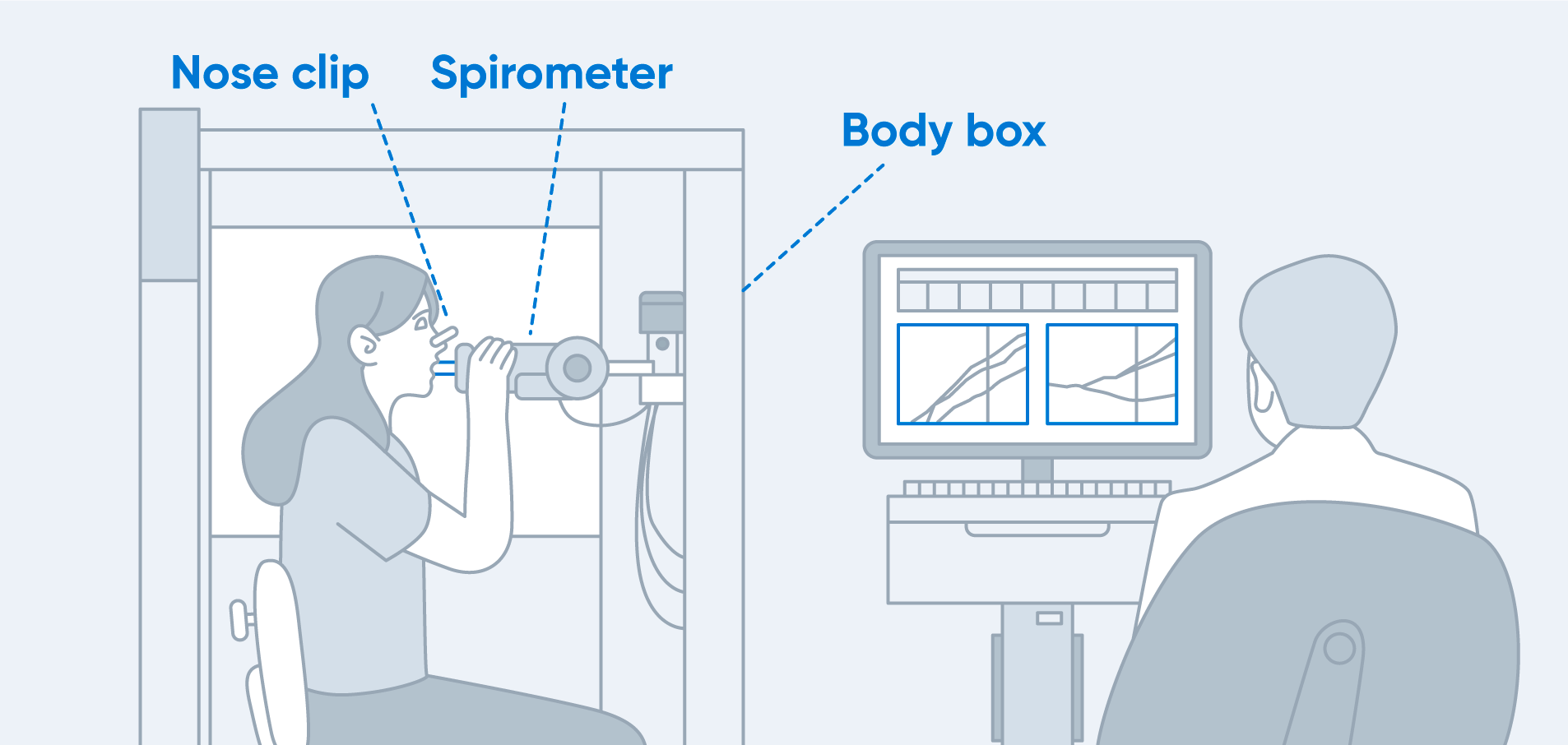Lung Volume Test (Body Plethysmography)
- Home
- Our Services
- Lung Volume Test
Services
Indications

A lung volume test may be recommended if you experience any of the following:
- Difficulty catching your breath.
- Symptoms of obstructive lung conditions such as COPD or asthma.
- Suspected restrictive lung diseases, including pulmonary fibrosis or sarcoidosis.
- You need a thorough assessment of your lung function before undergoing surgery.
- Monitoring or diagnosing lung-related health issues like chronic lung disease or respiratory disabilities.
What is a Lung Volume Test?
A lung volume test, also known as body plethysmography, is a diagnostic tool used to measure the total amount of air in your lungs. It checks how much air remains in your lungs after you’ve exhaled as fully as possible. By providing insights into both the capacity and the mechanics of your lungs, it helps diagnose conditions that either restrict your lungs from fully expanding or obstruct air from being fully exhaled.
What Can I Expect During the Test?
Here’s what will happen during your lung volume test, step by step:
1. Sitting in the Box: You’ll sit in a clear, enclosed booth that looks like a small shower cubicle. Don’t worry, it’s completely safe, and you’ll be able to see and speak to a Sleepscope medical technician throughout the test. Let them know if you need to pause at any time.
2. Wearing a Nose Clip: To make sure all your breathing is measured accurately; you’ll wear a small clip on your nose to prevent air from escaping through it.
3. Fast Breathing: First, the medical technician will guide you to take quick, shallow breaths through a mouthpiece connected to the machine.
4. Normal Breathing: After that, you’ll breathe in and out normally, just like you usually do when resting.
5. Deep Breathing: Next, you’ll take a deep breath in, and then breathe out as much as you possibly can to empty your lungs.
6. Slow Breathing: Lastly, you’ll take slow, deep breaths in and out to help measure your lung capacity.
The machine inside the booth measures tiny changes in air pressure, which helps us figure out how much air your lungs can hold. You won’t feel these pressure changes as they’re very small.
Sometimes it takes a few tries to get the breathing just right, and that’s perfectly normal. The medical technician will guide you through it and may repeat parts of the test to ensure the results are accurate.
What are the Risks of the Test?
The lung volume test is generally safe, but like any procedure that requires exerting your lungs, you may experience temporary side effects. Some people feel lightheaded or dizzy, while others may cough more than usual after the test. In rare cases, deep breathing may trigger symptoms in individuals with asthma or other respiratory conditions. We will monitor you closely to ensure your safety throughout the procedure.
Preparation
(This test will take up to 15-20 minutes)
To ensure accurate results from your lung volume test, it’s important to follow these preparation steps:
- Stop Certain Medications: Some lung medications, like inhalers, should be paused before the test. You’ll need to stop the following medications:
- 12 hours before the test: Alvesco, Anoro, Atrovent, Beclomethasone, Breo, Breo-Ellipta, Bretaris, Brimica, Flixotide, Flutiform, Incruse, Onbrez, Oxis, Pulmicort, Salmeterol, Seebri, Seretide, Serevent, Singulair, Spiolto, Spiriva, Symbicort, Ultibro & Breezhaler.
- 4 hours before the test: Airomir, Asmol, Brezhaer, Bricanyl & Ventolin, unless absolutely necessary.
- Wear comfortable, loose clothing that doesn’t restrict your breathing.
- Avoid smoking for at least 6 hours before the test.
- Refrain from drinking alcohol for at least 4 hours before the test.
- Don’t eat a large meal within 2 hours of your test, as this can make it harder to breathe deeply.
- Avoid intense exercise for at least 1 hour before your appointment.
- Let us know if you’ve recently had:
- Eye, chest, brain or abdominal surgery (within the last 4 weeks).
- Chest pain, a recent heart attack, or an unstable heart condition.
- Active tuberculosis (TB) or a respiratory infection like a cold or the flu.
- A bulging blood vessel (aneurysm) in your chest, abdomen, or brain.
- Sinus or middle ear surgery or infection (within 1 week).
Following these steps will help ensure your test provides the most accurate results. If you’re unsure about your medications or any of the guidelines, contact your Sleepscope beforehand for clarification.
Request an Appointment with Sleepscope.
Call us or submit a request form to make an online booking.
Request an Appointment with Sleepscope.
Call us or submit a request form to make an online booking.